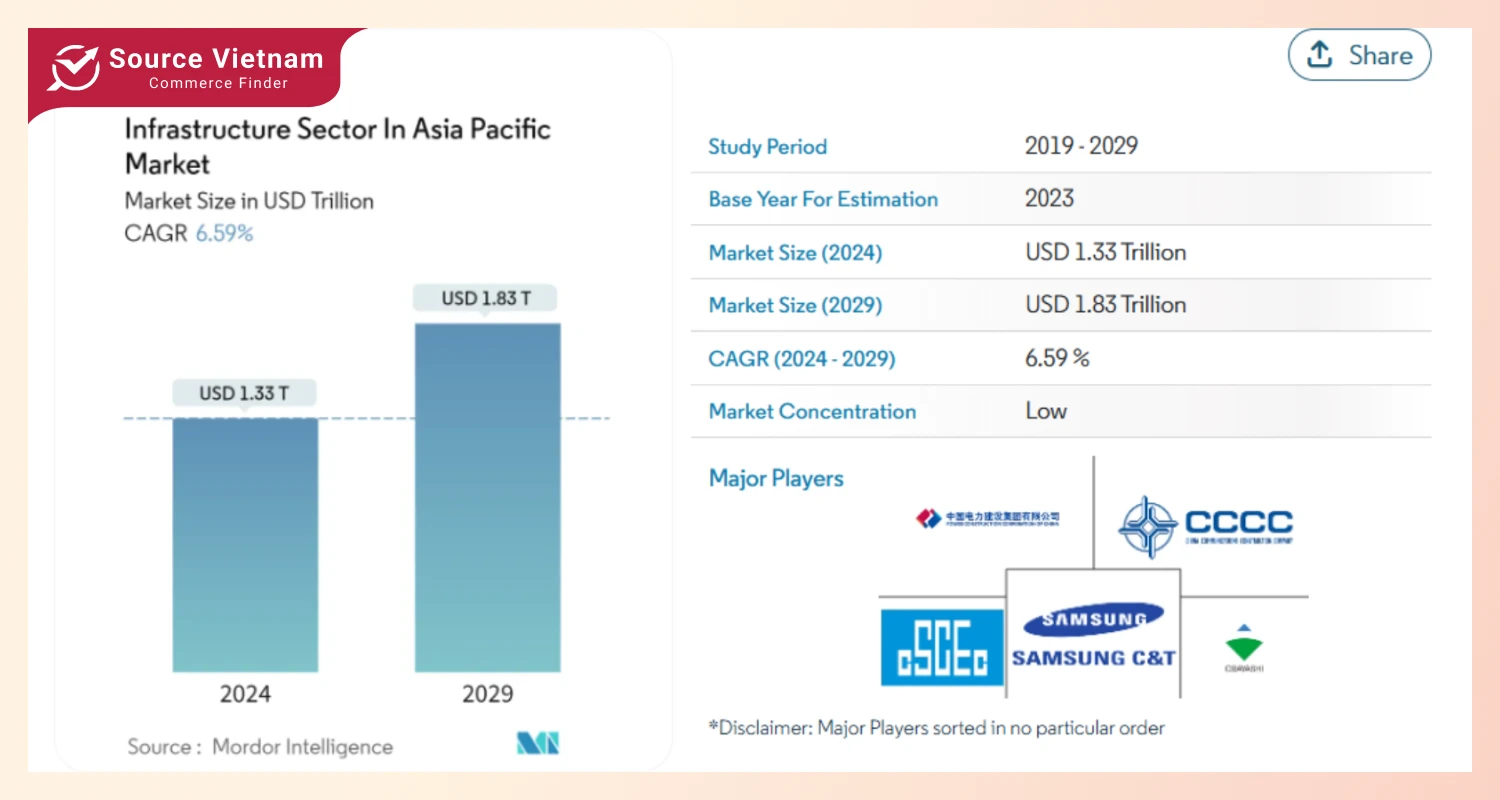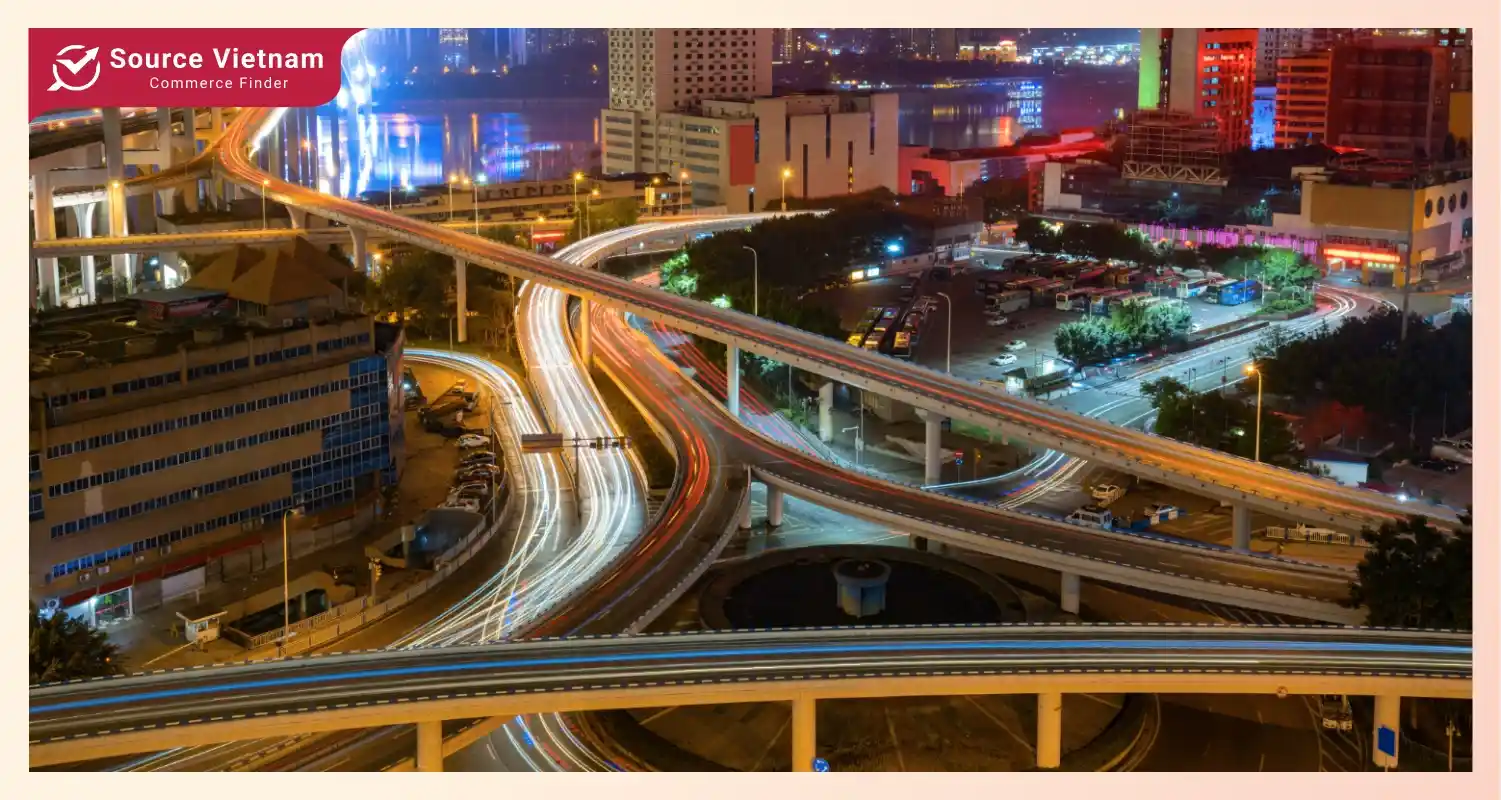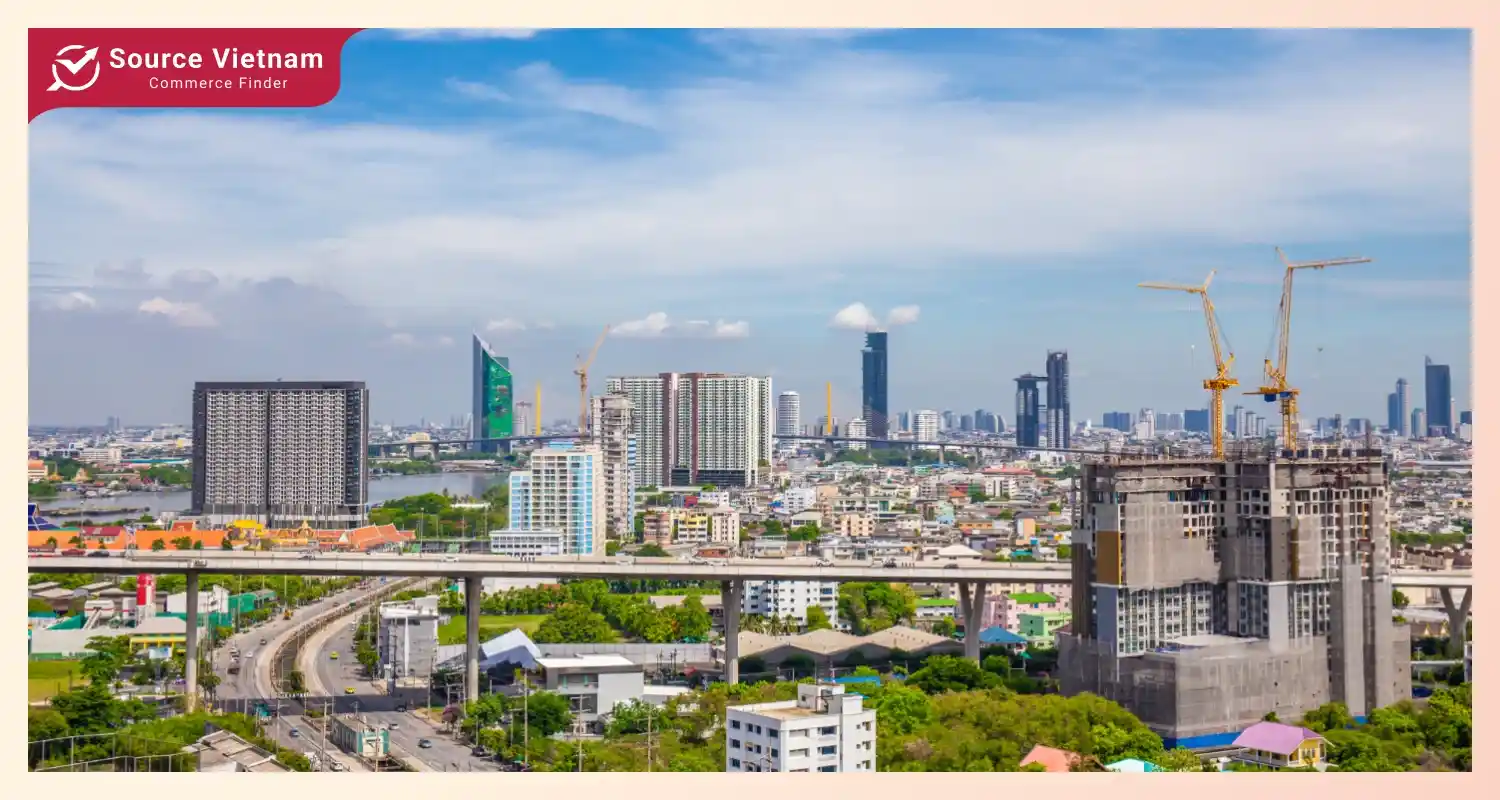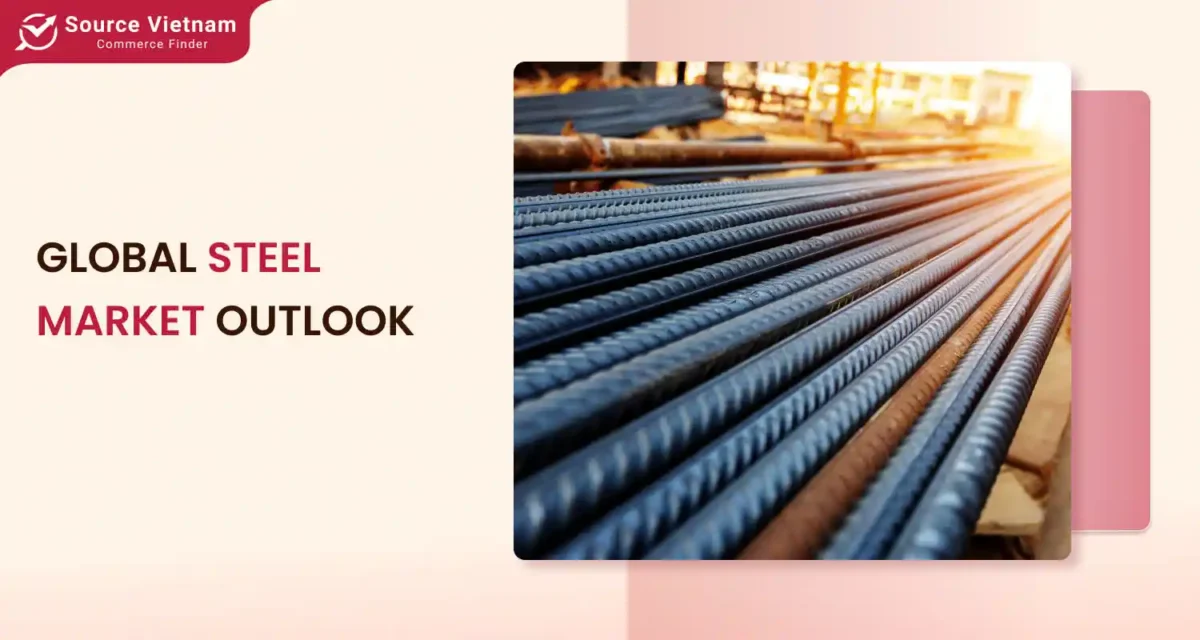Insight:
- The APAC infrastructure market is experiencing rapid growth, driven by urbanization and government initiatives, with diverse transportation, energy, and telecommunications needs.
- While facing challenges like financing gaps and varying development levels, the region presents significant investment opportunities and potential for sustainable development.

Large scale and impressive growth of APAC infrastructure
The Asia-Pacific (APAC) region is one of the biggest infrastructure systems in the world and increasing quickly, supports the booming economies and cities. This market is forecasted to reach $1.83 trillion by 2029 with a growth rate (CAGR) of 6.59% from 2024-2029. This makes it a very attractive opportunity for investors.

This market also has diverse types and sectors. It’s not just one thing, but a wide range of essential areas. This includes transportation with roads, railways, airports, and seaports. There are also covers energy, with power plants, electricity grids, and pipelines. Beyond this, there is water and sanitation, telecommunications with internet and mobile networks, and social infrastructure like schools, hospitals, and housing. This shows how the region focuses on improving people’s lives and demands on all-round development.
Despite this market has much potential, APAC infrastructure development varies significantly between countries. APAC requires a major infrastructure investment to grow economic and social development needs.
The Asian Development Bank (ADB) forecasts that the region needs approximately $26 trillion for infrastructure from 2016-2030. Anh with this growth potential, the APAC infrastructure market is attracting significant attention from many investors from foreign, including governments and businesses.
The statistics on the APAC infrastructure market
First, we can mention Southeast Asia, one of the boom regions in infrastructure, with major projects in Vietnam, Thailand, the Philipines, Malaysia, and Indonesia accepted. Those were supported by many factors, such as loans and other assistance provided by Japan and China. The highlight is China’s investment in ASEAN in recent years; it has risen rapidly.

Japan is leading in the Southeast Asia Infrastructure Race against China; their project is almost one-and-a-half times. The projects backed by Japan in the region’s six largest economies, including Indonesia, Malaysia, Philippines, Singapore, Thailand, and Vietnam, are valued at $367 billion.
In this, Vietnam is one of the biggest priorities for Japan’s participation in infrastructure, with projects pending reaching $209 billion, more than half of Japan’s total and this includes $58.7 billion of high-speed rail from Hanoi to Ho Chi Minh City in Vietnam.

The infrastructure sector plays an important role in the Indian economy. This sector is essential to improving the nation’s overall development. India has to enhance their infrastructure to reach $5 trillion in 2025 economic growth target.
The government has many policies and plans to boost the expansion of the infrastructure industry. In summary, almost all regions in the Asia-Pacific focused on investing in infrastructure to boost their economy and people’s lives.
The market trends of APAC Infrastructure
The first factor we need to focus on is the increasing investment in the infrastructure sector. Countries should adopt innovative financing strategies to meet their long-term infrastructure needs. The Philippines is using 5.6% of its GDP to modernize its infrastructure.

India is also investing in their road infrastructure, they focus on building new highways and allocating significant funds to the Ministry of Road Transport and Highways. China uses special-purpose bonds (SPBs) to finance local infrastructure projects. In 2021, more than 95% of the CNY 3.65 trillion (about $573 billion) of SPBs were issued to support transportation, municipal administration, industrial parks, and social projects.
In the China market, they are expanding its transportation infrastructure, focusing on roads, railways, and logistics improvements. They have a 14th five-year plan for enhancing its transportation system. They also face logistics sector issues, such as the poor state of warehouse and transportation equipment, urban traffic congestion, and talent shortage. Japan is investing in modernizing its already advanced transportation infrastructure. This includes expanding airports, upgrading its high-speed rail network, and funding major transportation projects in the Philippines.
Potential of APAC Infrastructure
The APAC infrastructure market has many growth opportunities and is driven by many factors. Asia needs better transportation, cleaner energy, and stronger internet connections to keep growing.

This means building faster trains, solar and wind farms, and 5G networks. It also means making sure everyone has clean water. However, finding money and dealing with regulations can be tricky. If these challenges are overcome, the future of Asia looks bright!
Conclusion
The APAC infrastructure market is a dynamic landscape of growth and opportunity. Driven by urbanization, government initiatives, and increasing investment, the region is addressing its diverse infrastructure needs across various sectors. While challenges remain, the future of APAC infrastructure appears promising, with the potential to drive sustainable and inclusive development for years to come. Follow our blog for more interesting information!







